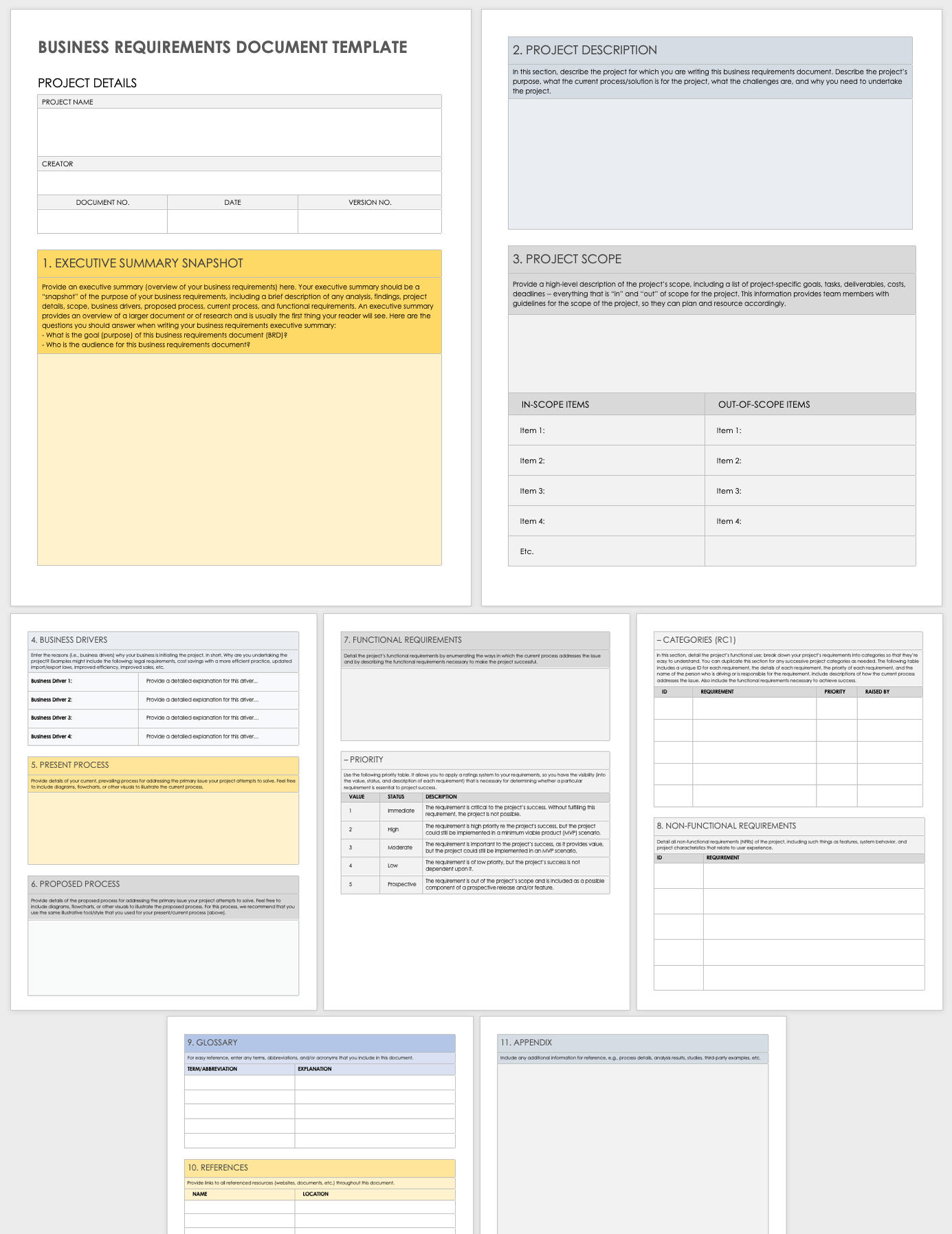Creating a comprehensive business analysis requirements template is crucial for effective requirements gathering and management. It streamlines the process, ensures consistency, and facilitates stakeholder communication. By clearly defining the necessary information, the template helps analysts capture all essential requirements, avoiding omissions and minimizing errors.
A well-structured business analysis requirements template provides a standardized approach, making it easy for different stakeholders to understand and contribute to the requirements gathering process. It reduces the likelihood of misunderstandings and misinterpretations, ensuring that the project aligns with the organization’s goals and objectives.

Importance of a Business Analysis Requirements Template
A business analysis requirements template serves multiple important functions:
1. Consistency and Standardization: It ensures consistency in the way requirements are gathered and documented, eliminating variations and ensuring a unified approach among different analysts.
2. Completeness and Accuracy: A well-designed template prompts analysts to capture all relevant information, reducing the risk of omissions and ensuring accuracy and completeness in the requirements specifications.
3. Stakeholder Communication: The standardized format of the template facilitates effective communication among stakeholders, making it easier for them to provide input, review requirements, and reach consensus.
4. Project Success: By capturing and managing requirements effectively, the template contributes to the success of a project by ensuring that the solution meets the organization’s needs and requirements.
Elements of a Comprehensive Business Analysis Requirements Template
A comprehensive business analysis requirements template should include the following elements:
1. Requirement Identifier: A unique number or code that identifies each requirement, making it easy to track and refer to during the analysis process.
2. Requirement Statement: A clear and concise description of the requirement, including its purpose, scope, and any specific details or constraints.
3. Priority: The level of importance assigned to the requirement, indicating its urgency and need for fulfillment.
4. Traceability: Links to related requirements, project documentation, or other sources, providing a comprehensive view of the requirement’s context and dependencies
5. Acceptance Criteria: The specific conditions that must be met to consider the requirement fulfilled, ensuring clarity and objectivity in evaluating its implementation.
Conclusion
A business analysis requirements template is an essential tool for project success. By standardizing the requirements gathering process, ensuring completeness and accuracy, and facilitating stakeholder communication, templates contribute to effective project planning and execution.
Adopting a well-designed business analysis requirements template enhances the quality of requirements specifications, reduces project risks, and ultimately leads to the development of solutions that meet the organization’s objectives and deliver value.
